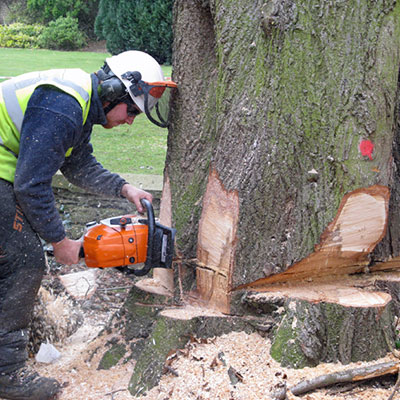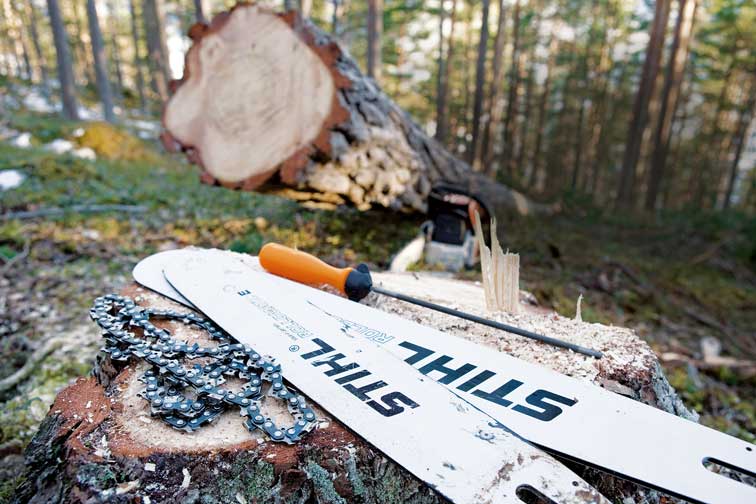
A Guide to Tree Felling Licensing
For the most part, it’s necessary to obtain permission from the Forestry Commission before felling growing trees located anywhere other than in a garden, churchyard or designated open space – even if they are on your own land. This permission is given in the form of a licence or via approval from a Dedication Scheme. If the tree is in an area other than those listed above, it’s essential to apply for permission via a licence or Dedication Scheme, to avoid potential prosecution.
In this article I want to go over the legal essentials of tree felling, and applying for and obtaining a felling licence. Before any of that though, let’s discuss what justification an arborist would have for cutting trees down.
Why do Trees Need to be Removed?
Global warming and other environmental concerns emphasise the importance of taking care of the world’s forests, but that doesn’t mean that all trees everywhere should be protected at all costs regardless. There are plenty of valid reasons why trees need to be felled from time to time. These include:
- The tree is damaged, dying, or dead, or is in danger of falling.
- The tree is diseased, and may infect other nearby trees.
- The tree is hampering the growth of other trees in the vicinity.
- Trees need to be removed to make way for new construction.
Felling a tree is a serious decision but can sometimes be regarded as the lesser of two evils. In the case of controlling and limiting the spread of tree diseases like Dutch Elm, Ash Dieback and Phoney Peach Disease, it’s one of the most powerful tools in the conservationists arsenal.

Applying for and Obtaining a Licence
To apply for a licence to fell trees, you must be the owner of the land where the trees are, or a tenant whose lease gives them the right to fell the trees on the land. An agent acting for either an owner or a tenant can also apply for a licence.
To apply for a license, visit http://www.forestry.gov.uk/felling to download an application form. Alternatively, you can get a form from any Forestry Commission office. Fill in the form and then send it to the address provided.
Along with the application form you’ll also need to provide two signed copies of a map that shows the area where the trees are.
Along with the application form you’ll also need to provide two signed copies of a map that shows the area where the trees are. The specific type of map required is called an Ordnance Survey Master Map (OSMM). If the land is in England or Wales, these maps can be obtained by completing a request form on the Forestry Commission website. In Scotland, they must be obtained in person from the Conservancy Office.
Application processing
Once an application has been received it’s generally acknowledged within three working days. Depending on the situation, the Forestry Commission may request to view the land and the trees. When this is the case the Commission will contact the applicant to arrange a visit to the site.
Also as part of application processing, details about the planned felling is placed on the Register of New Planting and Felling for four weeks. This is done so that the public has time to comment on the proposed felling plan. A licence cannot be granted until this four-week period has passed.
As well as this, you may be required to submit a plan indicating how the area will be restocked after the existing trees are felled. Depending on whether or not you plan to restock the land, your application may be processed under a different set of regulations.
In Scotland, the Nature Conservation Act 2004 may require some extra licensing conditions, depending on what natural features are present on the land.
In most cases, a tree felling licence will be issued within ten weeks of receipt of the application.
Exemptions to Licensing Requirements
There are some specific exemptions to the licensing requirements for felling trees. If you’re not sure whether or not your situation qualifies, contact your local Forestry Commission to check. Some possible exemptions include:
- Felling to prevent the spread of a quarantine disease or pest.
- Felling to prevent a real or immediate danger.
- Felling up to the limit of 5 cubic metres per calendar quarter.
- Felling trees that fall within a certain size limit (typically trees no more than 1.3 metres in height with a diameter of 8 centimetres or less).
In some circumstances, if you’re not happy with the restocking conditions of a licence you are granted, or if you want to appeal refusal of a license, you can appeal to the Forestry Minister.
